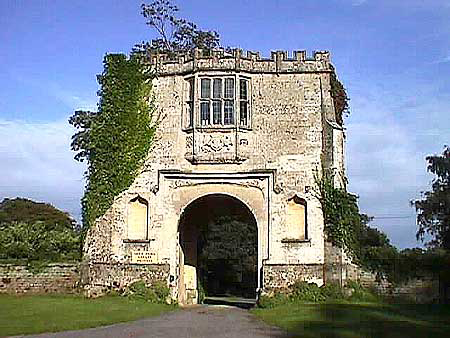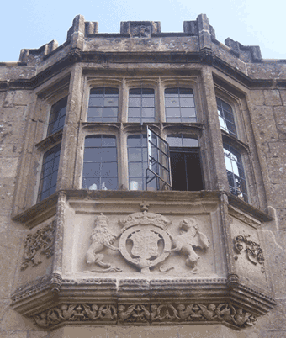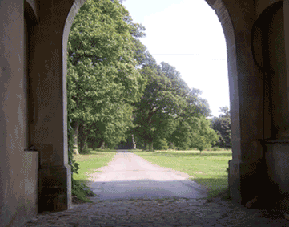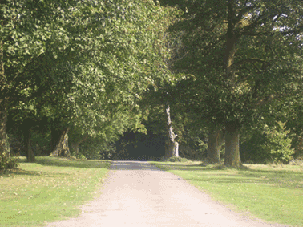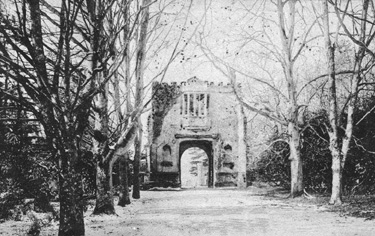|
Spye Arch stands alone on the top of Bowden Hill, in a position that was once the entrance to Spye Park House, the last home of the Bayntun family from 1645. But this beautiful landmark was originally built three hundred years earlier as the main entrance to Stanley Abbey which stood just within the eastern edge of the parish, situated in the valley of the Marden River, between Bremhill and Chippenham. Sir Edward Bayntun (1480 - 1544) obtained a Grant from Henry VIII and purchased the house of the Cistercian Monks of Stanley and the greater part of the demesne. Stanley was a Royal foundation of Henry II and the Empress Maud, dating back to 1151, with the principal part of the estate belonging thereto, and other lands in the counties of Wiltshire, Berkshire and Somerset. The Abbey was demolished shortly after he purchased it and some of its materials used in Sir Edward's new home, but the archway at the entrance to the Abbey was carefully dismantled and re-erected as a entrance to his new mansion - Bromham House. The archway was re-built as a gift from Sir Edward's good friend Catherine of Aragon, who was Henry VIII's first wife. Bromham Hall was situated at Bromham Park and in 1508, John Bayntun and his family moved there from Faulston. Some years after John's death it was greatly enlarged by his son, Sir Edward Bayntun, using some of the materials removed from the ruins of Devizes Castle and decorated with stone carvings in the new and fashionable style. He twice entertained Henry VIII and his Court there - "A place fit for a King". Bromham House was without doubt one of the most famous houses in the country and Spye Arch stood firmly at the entrance. The archway bears the royal arms of Henry VIII beneath the oriel window in the upper storey, and in the spandrels of the arch forming the gateway, those of Sir Edward Bayntun, the original builder and his first wife Elizabeth Sulliard, the daughter of Sir John Sulliard, Lord Chief Justice of the Common Pleas.
Once you entered the archway, this romantic pathway (above) took you to one of the finest houses in England. Bromham House however was completely destroyed by the Royalist troops from the Devizes Garrison during the Civil War, being put to fire on 5th May 1645. The gatehouse, which escaped the destruction is now at one of the entrances to Spye Park at Bowden Hill. But rather than
rebuilding on the ruins of Bromham House the family built a smaller
house at Spye Park, using some of the stones. Once again the archway
was carefully dismantled and was re-erected on its third location
by Sir Edward Bayntun, the grandson of the above Sir Edward (the original
builder of Bromham House). This new house was called Spye Park House and this mansion was also greatly altered - mostly at the front of the building - in 1747 but sadly this house too was destroyed by fire on 8th August 1974 and was completely demolished. The archway however was not touched and again stood firm, as if in defiance, while the three great historical buildings it served crumbled to the ground. Today this beautiful
landmark is known to locals as Spye Arch and is the only reminder
of the Bayntun's two great houses in this part of the county.
|

